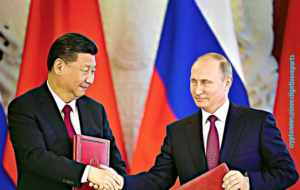 In a recent statement, Russian Deputy Foreign Minister Andrei Rudenko highlighted the surging use of national currencies in trade settlements between Russia and China. According to Rudenko, this trend has gained momentum in recent years and experienced a significant acceleration throughout 2022. These comments come amidst growing bilateral economic ties between the two nations and signify a departure from traditional reliance on the US dollar in trade transactions.
In a recent statement, Russian Deputy Foreign Minister Andrei Rudenko highlighted the surging use of national currencies in trade settlements between Russia and China. According to Rudenko, this trend has gained momentum in recent years and experienced a significant acceleration throughout 2022. These comments come amidst growing bilateral economic ties between the two nations and signify a departure from traditional reliance on the US dollar in trade transactions.
The Deputy Foreign Minister’s remarks signal a potential shift in the global financial landscape, as more countries seek to diversify their currency reserves and reduce dependence on the US dollar. In light of this, VTB Bank President, Andrey Kostin, expressed his belief that the Chinese yuan has the potential to replace the US dollar as the world’s leading reserve currency.
Kostin’s prediction reflects the increasing economic influence of China, which has emerged as a global economic powerhouse in recent decades. As the world’s second-largest economy, China has steadily expanded its international trade and investment, leading to a rise in the use of the yuan for cross-border transactions.
The growing preference for settling trade in national currencies between Russia and China not only strengthens their economic cooperation but also enhances their financial sovereignty. By reducing reliance on foreign currencies, both nations can insulate themselves from potential external shocks and maintain greater control over their economic policies.
While the transition from the US dollar as the world’s reserve currency is a complex and multifaceted process, the remarks by Rudenko and Kostin underscore the evolving dynamics in the global financial landscape. As more countries explore alternatives and promote the use of their national currencies in international trade, the yuan’s ascent as a potential reserve currency gains traction.



